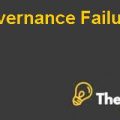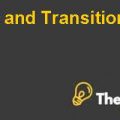
Company Background
Brief Summary of the Case
The case Nucor: Values And Transition basically explains the current situation of the company where Nucor who has been one of the most significant steel manufacturing company in the United States. The case depicts how the company evolved and performed better and extraordinary under the management of Ken Iverson, who was appointed the Chief Executive Officer of Nucor at the age of 39. He was promoted to the rank because the company suffered a loss of $400,000 on a sale of $20 million. The company was on the verge of being bankrupt when Iverson took over as the CEO.
However, under his leadership Nucor started selling all its non-profitable units, and focused on those units and businesses that were generating revenue. Iverson changed the organization culture and transformed the company into a decentralized organization which was based on four key principles. The four key points were that management will be obligated and focused on managing the company in a way where the people who performs extraordinary will be given bonuses. Secondly, Employees were given the confidence that if they do their job properly today, they will be with the company tomorrow. Employees will be treated fairly and equally. And last was that each employee who feels is being treated unfairly will be given the right to make an appeal and justify himself.
The company followed the strategy of providing the employees autonomy and freedom at work. Employees also preferred the structure and were liking the structure where they were the decision makers. Employees felt that the autonomy at work was the main reason for the increased productivity. It is not the equipment that makes the production, but the employees do so. The employees were given the responsibility to make purchases significant and important decisions for their specific plant because Ken believed that the employees run the plant and they should be given the right to make decisions. The bonuses were dispersed to the employees based on unit productivity rather than individual productivity. This made them work collectively together and all teams were aligned and ensured support to one another. The bonuses were dispersed on a monthly basis, which sometimes made employees take home 200 percent of their gross salary.
Key Players
The key players in the steel manufacturing industry of the United States are, first and foremost is Nucor Corporation. Along with this the industry has other players to such as Aramco, AK Steel Holding, USX and United States Steel.
Type of Organization
Nucor was basically following a flat organization structure. The hierarchy of the company had four levels between the entries of the employee to become the chairman. This included the hourly wage employees, supervisors and professionals, departmental manager, general manager and the chairman. The company was a flat organization where to reach the highest rank an employee had to manage four promotions.
Internal and External Factors Impacting the Cases
Case 1:1995
Case 1 where an entry operator was fired by the team for cheating on the bonus system. The internal factor which made them come up with this decision was that the team member in an Epple’s team was concerned and had reservations with his behavior where they immediately fired him. The production manager and the departmental manager decided to fire him because they had a clear stance with the fact that whoever cheats on the bonus must be fired with immediate effect. This was the internal factor that made the management come up with the decision.
The external factor they impacted the case was the decision and influence of Ken Iverson. Although he is part of the company and the CEO but since the authority was with the team therefore the role of Iverson was the external influence. He was keen to listen to the situation which Epple had to describe. The decision Iverson will take is entirely dependent upon his management policies and the fact that the decision lies with the internal management.
Case 2: 2002
Under this situation, an employee was fired because he was tested positive with drug test. In a random drug test, Giles Martin had been identified as positive with drug use. The employee was fired and dismissed on an immediate basis because it was ethically wrong and had to be checked and confirmed because it was dangerous to operate a machine while drunk. The employee was fired immediately because the company had a clear policy for drug and alcohol, where any employee found guilty will be fired without a notice. This was the internal factor and policy implemented by the company.
The external factor associated with this decision was the safety and precautionary measures for the rest of the employees. The decision was based on the external influence where the overall production and safety was at stake........................
This is just a sample partial case solution. Please place the order on the website to order your own originally done case solution.













